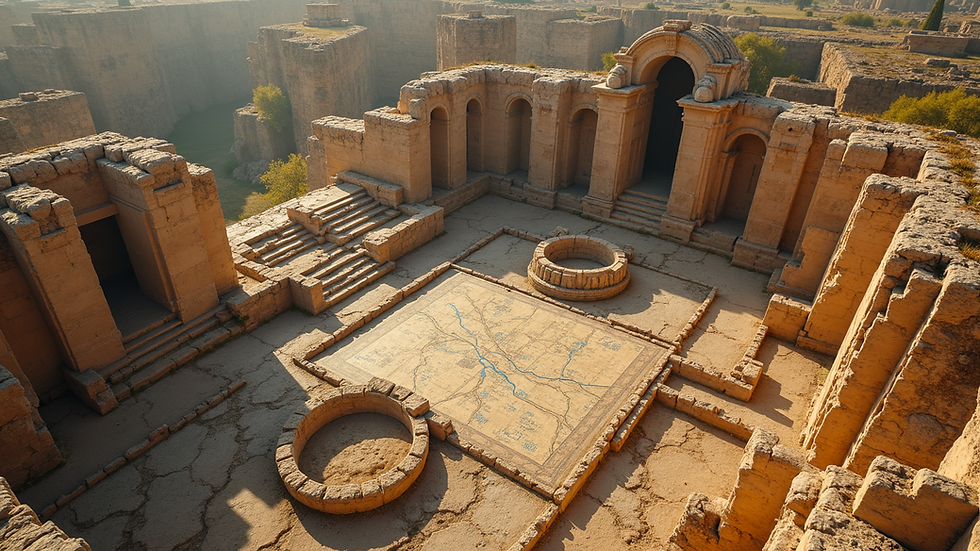How to Create Immersive Adventures for Your D&D Group
- Matthew David
- Jun 30
- 4 min read
Creating an immersive adventure for your Dungeons & Dragons (D&D) group can turn a standard session into an unforgettable experience. It is not just about rolling dice and slaying monsters; it’s about crafting a story where players feel invested, challenged, and ultimately rewarded. In this blog post, we will explore various techniques to enhance your campaigns, learning how to create captivating settings, intriguing plots, and engaging interactions.
The Key to Immersive Adventures
Immersion in a D&D game can be achieved by focusing on the details of your setting and narrative. The more vivid the world you create, the more players can visualize their characters’ experiences. Utilize sensory details to engage your players; what do the environments smell like? What sounds fill the air? These elements help build a rich atmosphere.
Setting the Scene
When starting your adventure, think about creating a detailed setting that becomes a character in its own right. Instead of a generic village, describe the cobblestone streets lined with vendors selling colorful wares. Give life to the tavern where the party meets, perhaps with a roaring fireplace, the sound of laughter, and the aroma of delicious food wafting through the air.

You can also consider unique locations that aren’t just backdrops but integral to the story, such as a haunted grove or a mystical mountain. The more unique and memorable these settings are, the easier it is for players to engage.
Crafting Intriguing Plots
Once the setting is established, the next step is weaving a compelling plot. Think of a storyline that allows all players to shine. Create plot hooks that resonate with each character's backstory. Design quests that require teamwork, where players must rely on each other's skills to succeed.
For example, if one character has past ties to a noble family, you could introduce a subplot involving political intrigue. Or if another character has a deep-seated fear of the dark, a curse that plunges a town into eternal night could become a central theme.

Using cliffhangers and unexpected twists can also maintain high levels of engagement. An ally may turn out to be a traitor, or an innocuous item could be the key to a grand mystery. Encourage players to think strategically and make choices that affect the game world.
Did Elon Musk Play D&D?
In recent years, many people have speculated about whether prominent figures like Elon Musk have played D&D. While there is no concrete evidence showing he has participated in D&D, his whimsical ideas and fondness for storytelling suggest he might align with the creative spirit of tabletop role-playing games.
Regardless of celebrity engagements, D&D has cultivated a thriving community where people find joy in storytelling. Every adventure is unique, shaped by the choices players make, and the possibilities are limitless.
Engaging Interactions
An immersive adventure thrives not only on a well-crafted setting and plot but also on character interactions. Create memorable NPCs (non-player characters) that players interact with. Give them distinct personalities, fears, and motivations. This depth allows players to forge connections, drawing them further into the experience.
To deepen the connections, consider giving NPCs their own story arcs. Perhaps a shopkeeper has fallen victim to a local crime syndicate. The party can choose to assist or ignore them, which could lead to different consequences and future encounters.
Utilizing Sound and Music
One key element often overlooked in creating immersive adventures is sound. Background music can elevate the mood of your sessions. For eerie dungeons, ambient soundscapes can enhance tension. For battle scenes, thrilling soundtracks can raise the adrenaline levels.
You could also implement sounds that relate directly to the current scenarios, from tavern chatter to the distant howl of creatures lurking outside. Combining sound with descriptive storytelling creates a sensory-rich environment that draws players into the game.

Encouraging Player Agency
One of the most rewarding aspects of D&D is the ability to influence the story. Allow your players the freedom to make impactful choices. The more they feel their decisions matter, the more invested they become.
For instance, if a player decides to use a charm spell on a critical NPC, let the outcome be unpredictable. This adds layers of consequence to their actions, and if their choice goes awry, it opens new pathways for the story. Taking risks can lead to exhilarating moments and engaging plot twists.
Additionally, include mechanics to encourage creativity. Give players opportunities to devise unique solutions to problems rather than adhering strictly to rules. For example, instead of providing a set number of monsters to defeat, let players create clever strategies to bypass or ingeniously defeat challenges.
Conclusion: Elevating Your Campaign
Immersive adventures in D&D require thoughtful preparation, creativity, and a willingness to adapt. By focusing on detailed settings, crafting compelling plots, designing engaging interactions, and encouraging player agency, you can elevate your campaign.
Whether you are leading a session at home or hosting online D&D campaigns, remember the goal is to have fun and create lasting memories. Embrace the chaos of creativity, and your players will thank you. Adventure awaits!



Comments